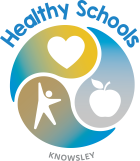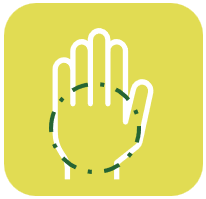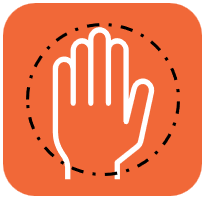One portion of starchy foods – such as bread, rice, potatoes, wraps, pitta, couscous, chapatti and pasta


Children grow at their own pace, so there’s no fixed rule for how much food they should eat at each age. As they develop, their appetite will naturally increase, so it’s best to follow their lead when it comes to how much they want to eat.
Since every child is unique in size, a handy tip is to use their own hand as a guide for portion sizes. As their hands grow, so will their portions—making it an easy way to adjust the amount of food you offer as they get older.
When preparing your child’s lunchbox try and provide the following portions of food groups. Use the hand guide to roughly workout how big a portion is.
One portion of starchy foods – such as bread, rice, potatoes, wraps, pitta, couscous, chapatti and pasta

One portion of protein foods – such as beans, fish, eggs, meat and meat alternatives such as Quorn or soya products

One portion of dairy foods - such as yoghurt, cheese or a dairy-free alternative

At least two portions of fruit and vegetables

The NHS Eatwell Guide also helps to show us how much of what we eat overall should come from each food group to achieve a healthy balanced diet. The guide is suitable to follow from ages 2 upwards.
To get more detailed information about children’s portion size visit the British Nutrition Foundation - Get Portion Wise.